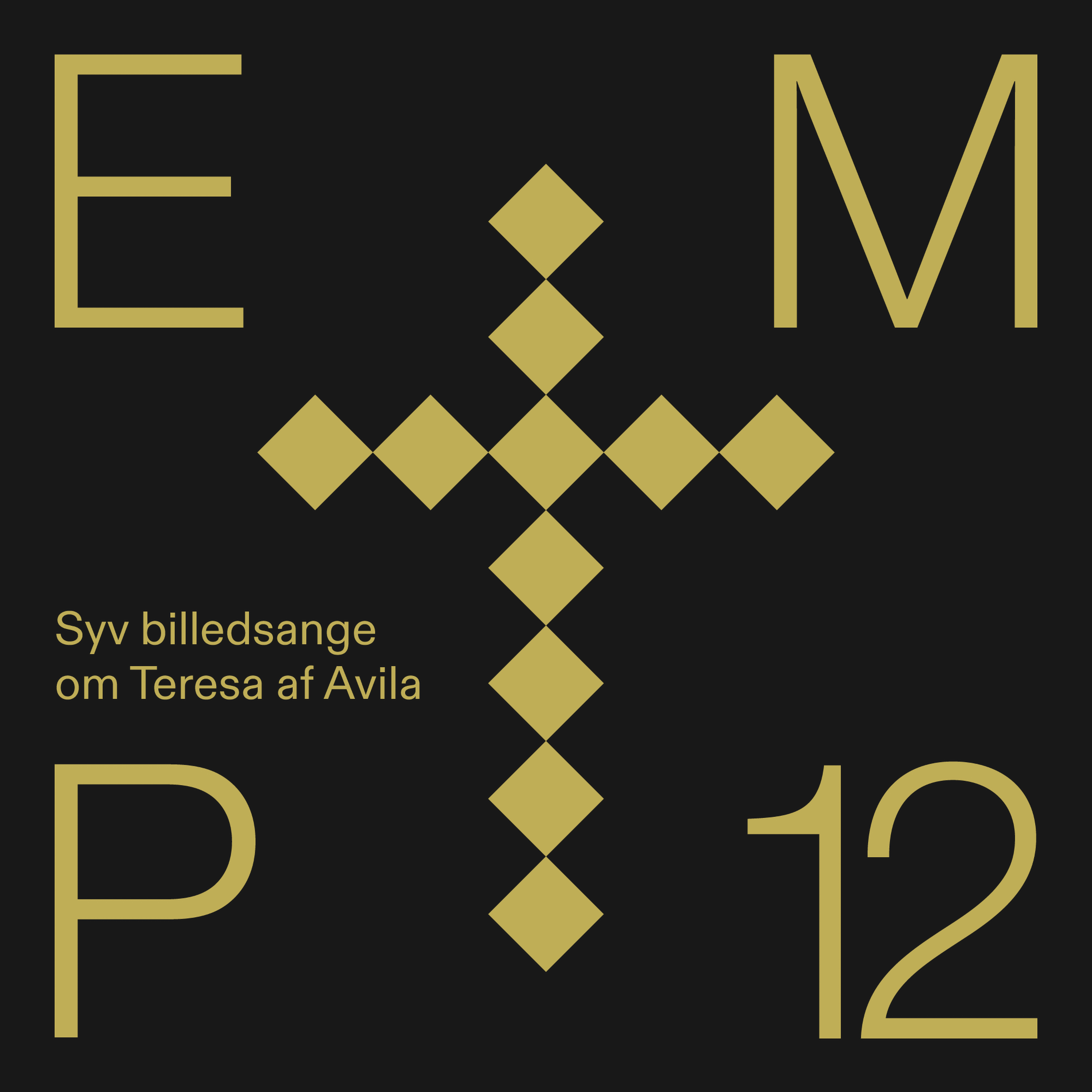EMP 12
EMP 12
Else Marie Pade’s Seven Picture Songs about Teresa of Avila (1980–81) stands as a late major work before her long creative silence. Combining electronic soundscapes with a narrated text, the piece evokes episodes from the life of the Spanish nun Teresa de Cepeda. Designed for church staging, it reflects Pade’s deepening religious devotion and her unique blend of sound, ritual and vision.
World premiere recording
-
mp3 (320kbps)69,00 kr.mp3€9.24 / $10.84 / £8.1Add to cart
-
FLAC 16bit 44.1kHz79,00 kr.CD Quality€10.58 / $12.41 / £9.27Add to cart

| 1 | Syv billedsange om Teresa af Avila (Seven Picture Songs about Teresa of Avila) | 66:54 |
69,00 kr.
€9.24 / $10.84 / £8.1
|
Teresa of Avila
By Jonas Olesen
Syv billedsange om Teresa af Avila (Seven Picture Songs about Teresa of Avila) (1980–81) is one of the last major works composed by Else Marie Pade before a long hiatus in her musical practice. The work is a religious piece centred on the Spanish nun Teresa de Cepeda (1515–1610) and is intended for ‘mimetic staging’ in a church setting.
At the time of the work’s creation, Pade was living in a Catholic community in North Zealand, where she had moved following a personal breakdown in the mid- 1970s – an aftershock of her experiences during the Second World War – as well as a result of a growing religious devotion. Seven Picture Songs about Teresa of Avila can be seen as a culmination of Pade’s exploration of religious themes, a tendency also evident in several of her earlier works. Among these are Klangfarver fra EMS (1970–71) and its later expansion, Maria (1969–70, revised 1972–80), both centred on the life of the Virgin Mary.
Seven Picture Songs about Teresa of Avila is structured as seven ‘pictures’ depicting scenes from Teresa’s life, accompanied by electronic sounds. A male narrator recites the text over the music, making the piece resemble a sonic narrative more than a musical composition. According to Pade, the electronic sounds are meant to illustrate the ‘spiritual currents within the songs’, combining abstract soundscapes such as dark sinus tone compositions enriched with reverb with concrete sound effects that support the action. The abstract sounds appear to be reused material from Maria.
The male narrator speaks with an indeterminate foreign accent and delivers the text in an almost chanting manner, which strongly emphasises the religious theme of the work. As far as is known, Seven Picture Songs about Teresa of Avila has never been performed, but Pade described the stage elements as involving a number of characters from the story arranged in ‘tableau-like forma- tions’, with minimal props such as swords, rosaries, and twigs. The performers are to be dressed entirely in white and illuminated by coloured lighting that changes with each scene. Pade described this lighting as ‘colour tones’ supporting the sonic timbres.
Notes
According to Ingeborg Okkels’ article Else Marie Pade, the Virgin Mary, and the Great Mysteries (Seismograf, 16 December 2022) the text of Seven Picture Songs about Teresa of Avila is based on a near-chronological account of Teresa’s life, taken from the author René Fülöp-Miller’s chapter in Saints that Moved the World (1940). Pade also added her own textual elements.
For further information, see also Inge Bruland: On Teresa of Avila and a little about Else Marie Pade’s Seven Picture Songs for her (Kvinder i Musik, Yearbook 2004).
